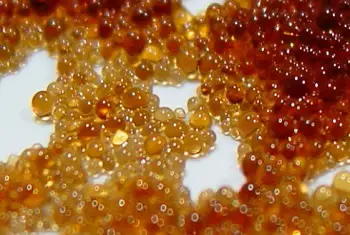You have had your water softener for years, and it has been working great! You add salt to the brine tank and don’t give it a second thought. But, why do you have to add salt anyway? And how does a water softener make your water soft? What happens when a water softener regenerates?
When a water softener regenerates, it removes the hard minerals from its water softener resin using sodium ions. The sodium ions from the brine in the brine tank replace the hard ions that have accumulated on the water soften resin so it can remove more hard ions from your water after regenerating.
Your water softener contains a resin that removes hard minerals from your water as the water flows through it. But there is a lot going on during a water softeners regeneration process, and understanding what is going on inside of your water softener is important so you will know how to keep it operating correctly for many years.
How does a water softener remove hardness from your water, and what a water softener does to keep softening your water?
When a water softener regenerates, it uses sodium ions from the saltwater in its brine tank to replace the hard minerals that have accumulated on its water softening resin. It then uses clean water to rinse the excess sodium away.
As hard water passes through a water softener and over the water softening resin that is in the water softener, the hard ions like calcium, magnesium, iron, and manganese that cause water to be hard, attach to the water softening resin.

The hardness ions are then held by the water softening resin, leaving the water going out of the water softener free of hard ions, or in other words, soft.
This is a process called ion exchange. (Source)
Your water softener meters your water usage so it knows when its resin needs to be regenerated.
As you use water from your water softener, the hard ions continue to build-up on the water softening resin.
At some point, the hard ions have to be removed from the resin, so your water needs to know how much water can be softened before the softening resin can no longer hold any more hardness.
In order for water softener resin to continue to remove hardness from your water, it has to be cleared of the hardness ions that have accumulated on its surface.
To do this, a water softener uses brine, which is water that has as much salt dissolved in it as possible at room temperature.
This high saturation of salt in the brine provides the water softener with the sodium ions that it needs to remove the hardness ions from the water softening resin.
How A Water Softener Creates Brine.
The brine used to remove the hard ions from water softening resin is created by the water softener putting water into the brine (salt) tank and letting it dissolve as much salt as possible.
This can take as little as about 30 minutes, but most water softeners allow for several hours for this to happen.
Most water softeners add water to the brine tank at the very end of the regeneration process so that it will dissolve the salt and be ready for the next regeneration.
Some, more programmable water softeners will add the water to the brine tank as the first step in the regeneration process, then let the salt dissolve for up to 4 hours before continuing to the complete regeneration process.
Do I Need To Add Water To My Brine Tank?
This method is referred to as a dry brine tank method. It is often used to help prevent salt bridging in the brine tank where humidity is high or to keep water that may have odors in it from sitting for long periods and spreading the odor throughout the area.
What happens to the brine?
The water softener draws the brine solution from the brine (salt) tank and flushes it over the water softening resin.
As the brine flushes over the resin, the sodium ions in the brine solution replace the hardness ions on the resin, and then the hardness ions are rinsed away to a drain. This replacement of ions is called ion exchange.
The sodium ions are able to do this because the charge that holds the sodium ions to the water softening resin is stronger than the charge that holds the hardness ions to the water softening resin.
After the brine solution has been flushed through the water softener, the water softener then washes away the majority of the sodium ions from the water softening resin using regular water.
This leaves the water softening resin ready to remove more hardness from your water the next time that you need it.
The regeneration cycles will be different from one brand to another, and with the advanced programmability of most water softeners today, the length of the cycles can vary from one to another.
The important thing about a water softener regenerating is that the water softening resin is cleared of the hard minerals that it has removed from the water by the use of an ion-exchange process that uses sodium ions to replace hard mineral ions from the resin.
After the sodium ions have replaced the hard ions from the resin, the excess sodium is also rinsed away before the regeneration process is complete.
How do I know if my water softener is regenerating?
A properly working water softener can perform its regeneration over and over for many years without the need of replacing the water softening resin.
Do I Need To Replace My Water Softener? Maybe Not!
If you notice that your water doesn’t feel soft, or that your water softener is not using salt, it may not be regenerating the water softening resin which is needed for it to produce soft water.
Why Is The Salt In My Water Softener Not Going Down?

